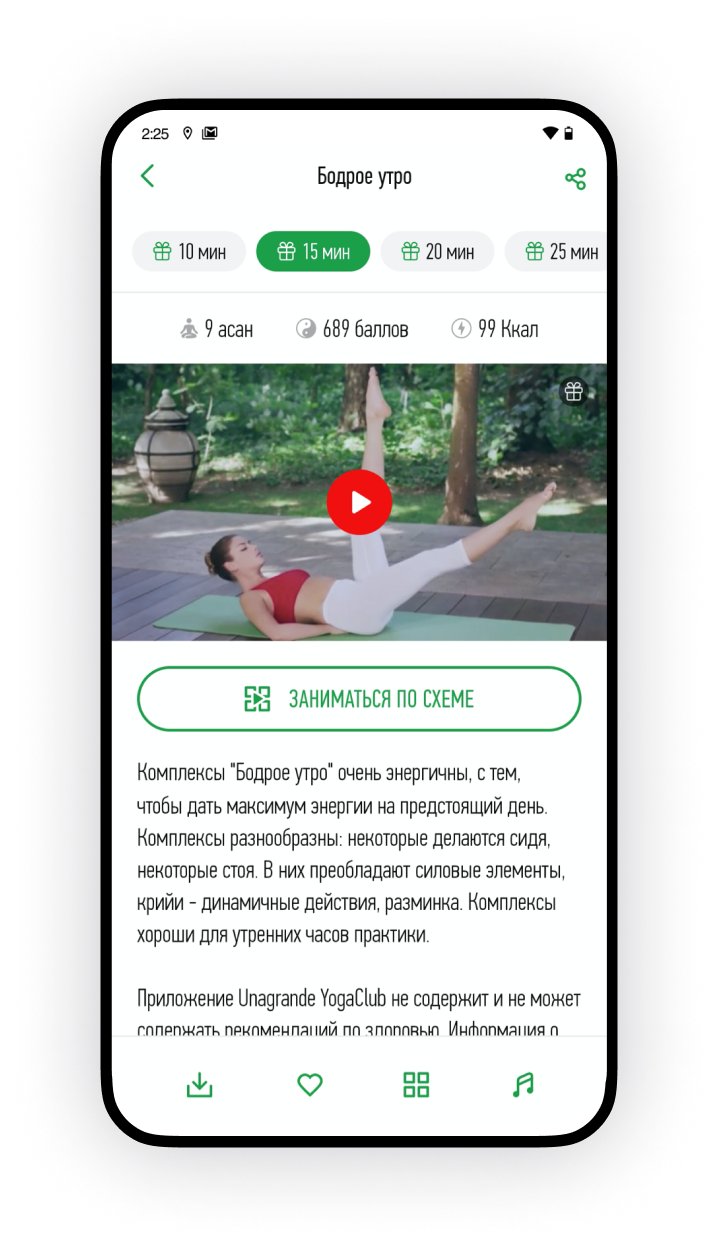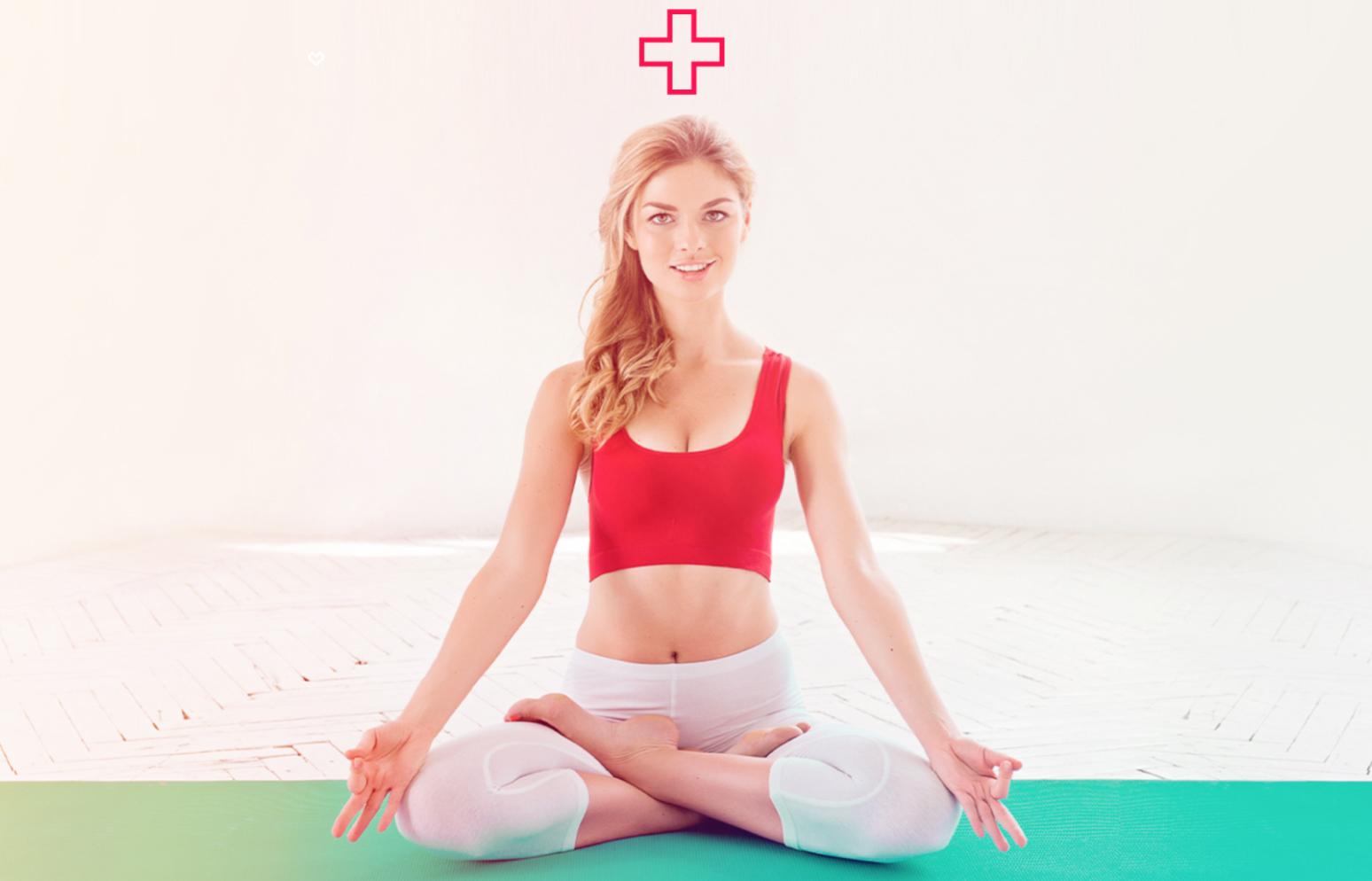FAQ
How to breathe correctly during yoga practice?
Proper breathing is a very important aspect of yoga practice that deserves special attention during your practice. Try to relax the muscles of your abdomen so that on the inhale, your abdomen fills with air, and on the exhale, the abdominal wall tightens, pushing the air out of your body. Do not hold your breath and try to breathe in a way that the inhale smoothly transitions into the exhale, and the exhale into the inhale. It is important to try to breathe naturally. If the pose is tense and your breath is disrupted, then in this case, it is natural. Breathe as the exercise requires effort.
What is a breathing cycle?
One breathing cycle is one inhalation followed by one exhalation.
Can I start practicing yoga through an application without prior instruction from a teacher?
Yes, you can. It’s best to begin your introduction to yoga in the asana and exercises section. Take the time to watch videos and read descriptions, and then start learning the exercises carefully and attentively. Repeat them until they become easy. Afterward, you can try following pre-made yoga classes. Pranayama (breathing practices), meditation, and shavasana can be practiced without any special preparation.
Are there any contraindications for yoga practice?
You should avoid doing asanas and exercises during flare-ups of chronic conditions or during periods of physical discomfort. If you have any doubts about the suitability of certain exercises due to specific medical conditions, it is advisable to consult with your treating physician before starting your practice.
Who are the yoga sessions designed for? Is any special preparation needed?
No special preparation is required to start practicing. You can begin your yoga journey at any age.
«I’m in pain! Is this normal?» What kind of pain is acceptable?
No! It should not be painful. In the beginning, there may be minimal discomfort due to lack of familiarity, but it should not be painful. Pay close attention to the sensations in your body and perform the asanas and exercises according to your own abilities. Overcoming mild physical discomfort (not to be confused with pain) in your practice can lead to increased flexibility, stretching, strength, and stamina. Try to perform the exercises with pleasure. The process of yoga practice is just as important as the results.
When is it better to eat: before or after yoga practice? (How much time should pass?)
It is best to practice yoga on an empty stomach. If you practice in the morning, it’s advisable to drink a glass of water before your session. During the day or in the evening, it’s recommended to avoid eating 1-2 hours before your practice, but you can have some herbal tea, water, or cocoa. After your session, it’s best to eat 30-40 minutes later, but if you’re very hungry, you can eat immediately.
What is the best time of day to practice yoga?
It’s best to practice yoga regularly, and you can experiment to find the time that suits you best. Morning sessions can provide an excellent boost of energy for the day. Practicing asanas and exercises in the evening, after work, can help release physical and emotional tension from the day. Don’t be afraid to experiment to find your ideal practice time.
My hands (or legs) tremble during certain asanas. Is this normal?
Yes, it’s normal. Tremors can occur because the primary muscle involved in a pose is fatigued, causing nearby muscle groups that have different functions to assist. If tremors occur, it’s a good idea to stop the pose and try it again later (later in the same day or on the following day). Don’t push yourself too hard—give your muscles time to rest.
Can I practice yoga every day?
Yes, you can, and if done moderately, it can even be beneficial. An ideal schedule is to practice yoga six days a week with one rest day. The key is to enjoy your practice and not overexert yourself.
Is it okay to practice when feeling very tired?
If you’re feeling very tired, you can still practice. In such a situation, it’s best to start with shavasana, then perform poses while lying down, and gradually move on to seated and standing asanas. In that order. Also, pay attention to breathing practices and meditation.
How do I start practicing?
The most challenging part of yoga is often unrolling your mat. To achieve results, you need to make an effort. We have created complexes even for the busiest individuals, so now it’s up to you. Try a 15-minute session and listen to your body, which will surely appreciate your efforts. With regular practice, you will see the first results in about a month.
Is a yoga mat necessary?
A yoga mat not only provides good traction with the floor, which is essential for some positions, but it also prevents discomfort during certain poses. For example, when lying on your stomach or performing inversions, the bony parts of your pelvis or neck can press into the floor. A soft surface is necessary to avoid damaging joint cartilage.
How do I choose the right lesson? Can I do multiple lessons at once?
In the early stages of your practice, pay attention to 15-minute sessions and try to perform them regularly (2-3 times a week) for a month. After you see initial progress and gain more confidence in your asanas on the mat, you can try increasing the intensity and moving on to longer sessions. You can do multiple videos at once, but for achieving specific goals (such as improving flexibility or strengthening your core), it’s recommended to follow themed classes regularly.
Can I practice yoga during «menstrual days»?
Some women continue practicing during their menstrual cycle, while others choose not to. During this time, each person’s body has its own unique needs. We recommend abstaining from asanas and exercises during your menstrual period. Instead, focus on breathing practices, meditation, and shavasana. However, if you still decide to practice during this time, avoid inverted asanas (variations of headstand, shoulder stand, plow pose, etc.).
I’m struggling, what should I do?
Don’t despair, and keep trying. Results will come with regular practice. It’s essential to prioritize safety and start with simple exercises. Begin with warm-up exercises, then proceed to basic asanas, and later try more complex sequences. Move in small steps from simple to complex, and pay attention to your body’s sensations while avoiding pain.






